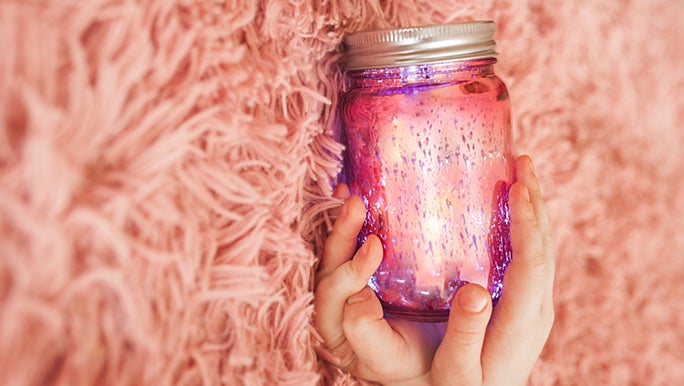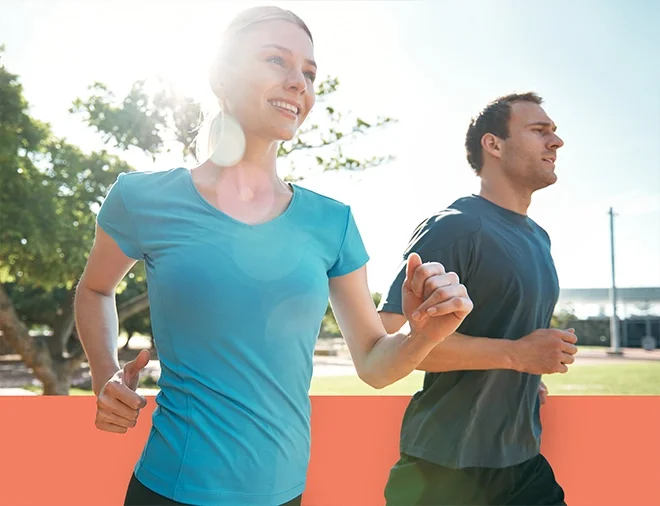We live in a busy world, so it’s no surprise that interest in mindfulness is growing. This practice has been said to have benefits for everyone – adults, teens, kids and even athletes.
But what, exactly, is mindfulness? We asked Consultant Psychologist Dr Bec Jackson about how mindfulness works, what its benefits are and how to get started with it.
What is mindfulness meditation?
“Mindfulness meditation is about seeing things more clearly by paying attention from moment to moment,” Dr Bec explains. “When you’re mindful, you notice what’s happening as it happens.”
She adds that it’s important not to place any judgement – good or bad – on whatever you notice. Instead, simply notice the moment exactly as it is. This allows you to pause and respond to a situation in a considered way, instead of having a knee-jerk reaction.
A common misconception is that mindfulness means ‘emptying out our minds’. But Dr Bec says that’s effectively the opposite of being mindful, which is about actively noticing what’s there.
Some examples of what it can look like when you don’t consciously make the effort to be mindful in your life include:
- getting to a destination and realising that you don’t remember anything about the drive there
- taking a sip of your coffee only to discover that your cup is already empty
- shampooing your hair twice because you forgot you washed it the first time
The benefits of mindfulness
Dr Bec says that a routine of practising simple mindfulness techniques can have considerable mental wellness benefits in our day-to-day lives, including:
- opening us up to new creative possibilities
- giving us access to new ways to resolve life’s challenges
- reducing our anxiety and helping us to manage stress levels
- increasing our awareness of how we’re feeling in the moment
- helping us to choose our reactions to specific triggers
- improving our sleep quality and helping us to feel less tired
And while many people assume that meditation and mindfulness are spiritual, Dr Bec says that mindfulness is now a field of rigorous neuroscience research.
“There are studies showing that mindfulness can change the structure of our brains, rewiring them for greater happiness and love,” she adds.

A common misconception is that mindfulness means emptying our mind, but it's about actively noticing what's there.
Who is mindfulness for?
In addition to making us personally happier, there’s a whole area of research around mindfulness and parenting. “Mindfulness can actively help us to enjoy the experience that is parenthood,” Dr Bec says. “And that leads to a better connection with our kids.”
Plus, she adds, mindfulness also has real benefits for the kids and teens themselves, including:
- increasing their emotional intelligence
- building their self-awareness
- increasing their ability to manage their own emotions
- introducing them to the concept of patience
Mindfulness activities for kids
Mindfulness can help to build resilience in kids, which is an essential skill for a happy life. Dr Bec recommends encouraging your kids to try some of the following activities.
A listening walk
Go for a walk with your kid, and encourage them to focus on their surroundings. Walking somewhere your child is already familiar with is great because it allows them to discover things they haven’t noticed before.
Mindful superhero posing
Posing like their favourite superheroes can help kids to feel strong, brave and happy, but you’ll need to get them to try it somewhere they feel safe. Regardless of their gender, encourage them to try either (or both):
- Superhero pose: get them to stand tall with their feet a little wider than their hips, then clench their fists and reach their arms up to the sky.
- Wonder Woman pose: again, get them to stand tall, this time with their legs wider than hip-width, and place their hands or fists on their hips.

A 'calm jar' ca help kids to understand why it's better to make decisions when they're calm.
A glitter jar
Also called a ‘calm jar’ or ‘mindfulness’ jar, this can help kids to understand why it’s better to make decisions when they’re calm.
To make one, get a clear jar or bottle, fill it with water, add some glitter glue and put the lid on tight. Shake the jar to make the glitter swirl. Explain to your child that this is what their thoughts look like when they’re upset.
Then encourage them to watch as the glitter settles and the water becomes clearer. Encourage them to think of their thoughts and emotions settling down the same way.
Want more mindfulness activities for your kids? Search for mindfulness meditation techniques for kids on YouTube or visit Smiling Mind.
Mindfulness activities for teens
If your kids are a bit older, Dr Bec has a few recommendations for them too.
Mindfulness apps
You can use teens’ love for their smartphones to introduce them to mindfulness. One of Dr Bec’s favourite mindfulness apps is Smiling Mind.
A listening walk
This works just as well for teens as it does for younger kids, and it’s a great way to get your teens to exercise as a bonus.
Adult colouring books
Many teens love art, and adult colouring books can help your teen to release their creativity without any fear of embarrassment. No longer just for kids, colouring books cover a wide variety of topics that cater to all sorts of interests.
Keeping a journal
Mindful writing can help teens to process what’s going on around (and inside) them. And the practice might spark an interest in creative writing.
Writing a daily gratitude list
Being a teen can be hard, but writing a list of what they’re grateful for each day – either on their phones, or on paper - can help to keep teens grounded. Encourage them to list out at least five things each day.
more popular reads for you
Tunes to get your healthy on
Enjoy three playlists created especially for you while we take a deeper look at how music can be good for you and your health
relationships
relationships

7 tips for building and maintaining friendships when you’re busy
When life gets busy with work or family, it’s all too easy to neglect your friends. Luckily, Consultant Psychologist Dr Bec Jackson has some simple tips and recommendations for building and maintaining lasting friendships.
What does running do to your body?
When you set fitness goals, avoiding pain and injury should be your number one priority. So what does running do to your body and do the benefits outweigh the risk of injury?
Mindfulness activities for adults
While you’re helping your kids to be mindful, don’t forget to include some mindfulness activities in your own day.
Mindful waking
One of Dr Bec’s favourite mindfulness techniques involves paying attention to the experience of waking up. Take a moment to notice what’s going on in your physical body when you wake up. Ask yourself:
- What body sensations are you feeling?
- What are you thinking about when you wake up?
- How are you feeling?
- What stretching and moving are you doing while waking up?
Keeping yourself in those few moments while you wake up is a great way to practise mindfulness.
Mindful eating
As you eat a meal, pay attention to the taste, texture, temperature and smell of your food. There are so many different aspects you can notice in every mouthful you eat. Dr Bec says that a single square of chocolate can seem incredibly decadent if you eat it mindfully.
Mindful walking
Walking mindfully involves paying attention to your feet and legs as you walk. Notice how each foot feels as it touches the ground, and feel your leg bend as you prepare to take the next step. “You can even do this walking from the couch to the kitchen,” Dr Bec says. “It doesn’t have to involve going outside.”
Mindful waiting
If you find yourself waiting in a queue or for an appointment, Dr Bec recommends using the time to practise mindful waiting.
“Notice how you feel when you realise that you have to wait,” she says. Does your heartbeat get faster? Do you feel relieved? Are you annoyed? Perhaps you’re even angry?
Whatever your experience is, checking in and noticing it without judging your response is a great way to become more mindful of your emotions.
Dr Bec’s personal mindfulness practices
One of Dr Bec’s favourite times to practise mindfulness is when she’s hanging the washing out. “It’s a daily chore that needs to happen,” she explains. “But it’s also a good time to anchor myself in the moment, paying attention to what I can see, feel and hear around me. I try to notice whether the sun is shining, and what birds I can hear.”
She adds that she also finds the shower is a great place to think. “I get some of my best ideas in the shower!” she comments. She finds that it’s a great time to step away from thinking about other stuff and just allow her mind to wander while also:
- paying attention to the feeling of the water on her skin
- noticing the temperature before she starts to adjust the hot and cold taps
- listening to the sound of the water as it hits the shower curtain or screen
Additionally, if you’re not sure where to start with mindfulness meditation, Dr Bec recommends apps like:
Related:
Dr Bec Jackson is a Consultant Psychologist with 20 years’ experience across clinical psychology, academia, therapy and education in clinical, forensic and organisational psychology.
Reviewed by the healthylife Advisory Board June 2021





